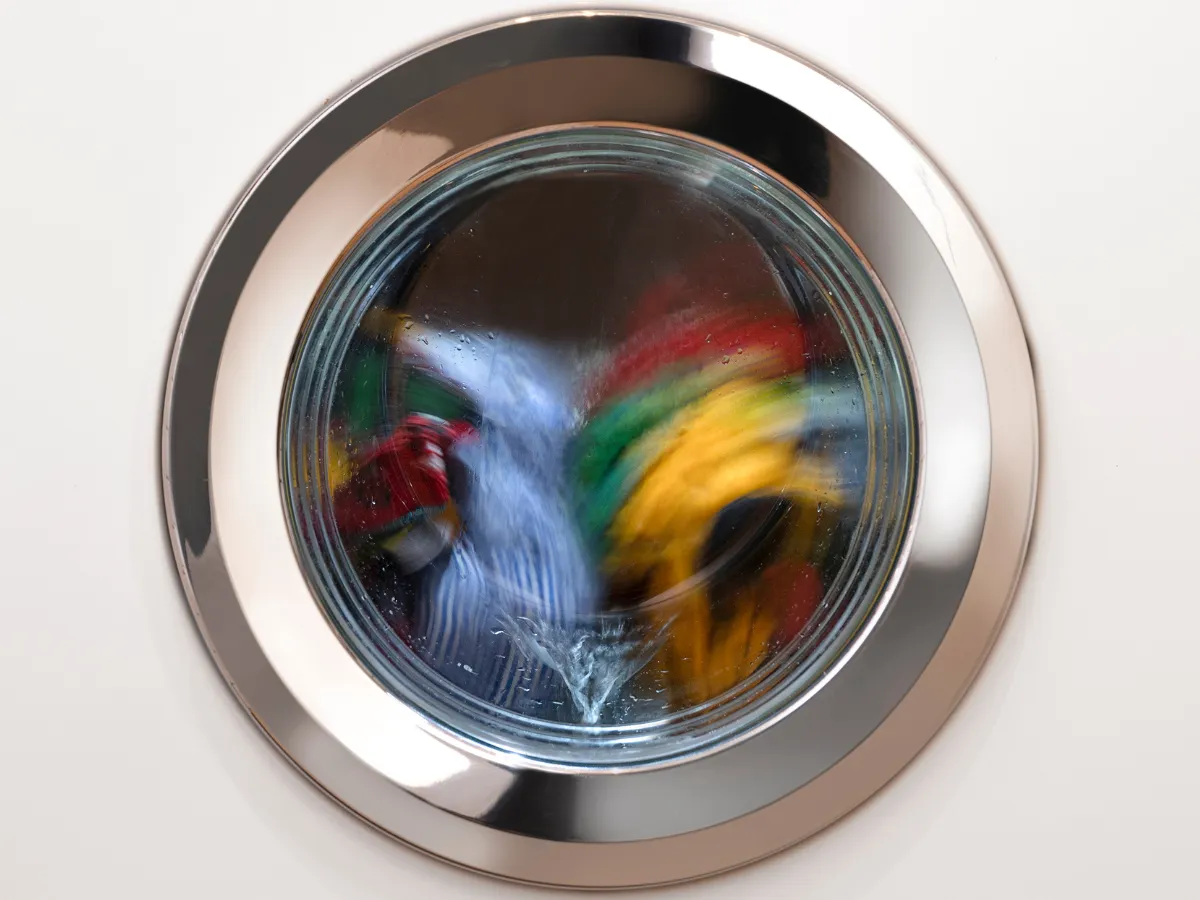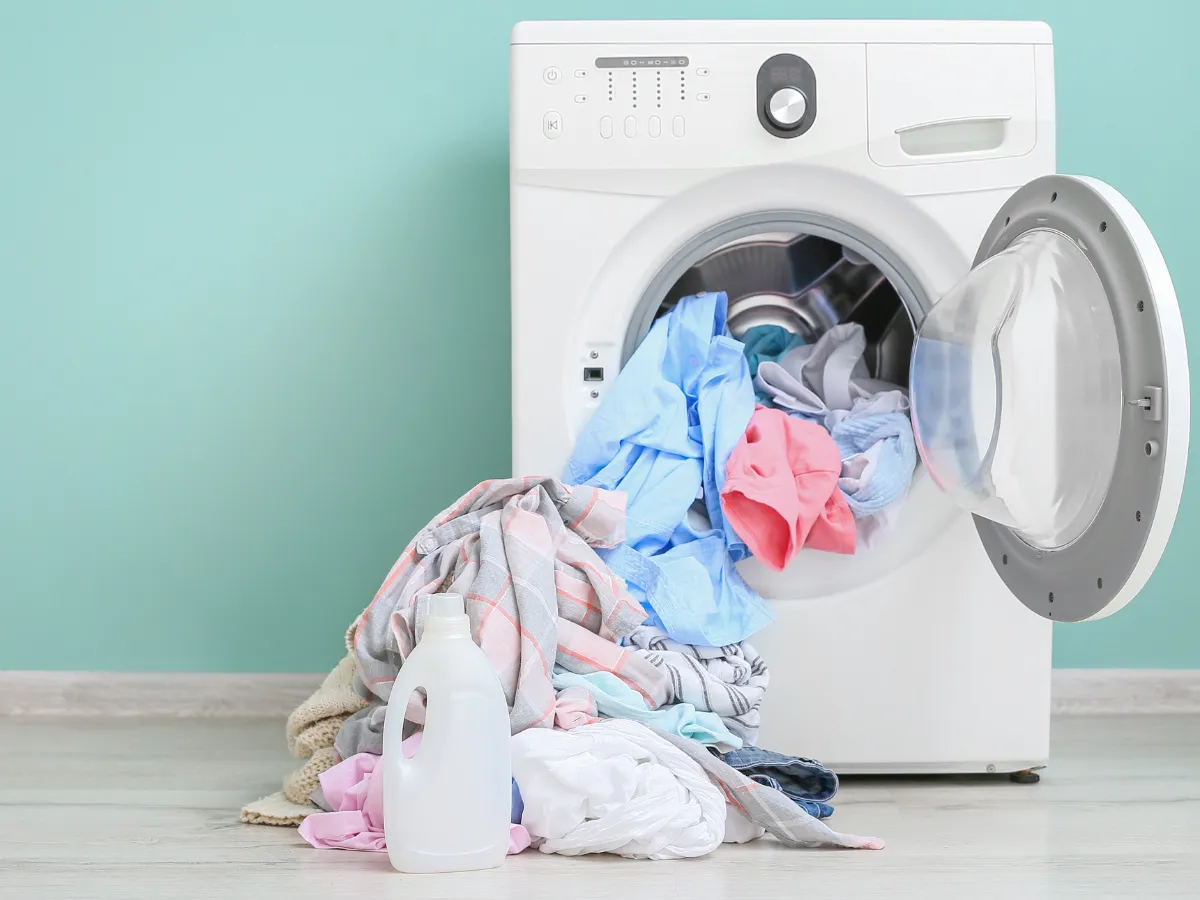What is the Spin Cycle in a Washing Machine and Why is it So Important?

When we do laundry, we select programs, temperatures, add detergent... but we often overlook a crucial phase that occurs at the end of the cycle: the spin cycle. We see the symbol on the control panel, hear the machine accelerating to dizzying speeds, but do we really know what the spin cycle in a washing machine is and what exactly it's for? Understanding this function is fundamental for caring for our clothes, saving time, and energy.
In this comprehensive guide, we'll unveil all the secrets of the spin cycle: how it works, what revolutions per minute (RPM) mean, how to choose the right speed for each fabric, and its benefits (and potential drawbacks). Get ready to become a spin cycle master!
Physics in Your Laundry: How Does the Spin Cycle Work?
The concept is simple but ingenious, based purely on physics. Once the washing machine has finished the wash and rinse phases, the clothes are soaked with water. The spin cycle is essentially an ultra-fast mechanical wringing process.
Here's how it works:
- High-Speed Rotation: The washing machine motor spins the drum (the perforated cylinder holding the clothes) at very high speeds.
- Centrifugal Force: This rapid rotation generates a powerful centrifugal force. Imagine how you feel on a fast-spinning fairground ride; the force pushes you outwards. The same happens to the water trapped in the clothes' fibers.
- Water Expulsion: Centrifugal force pushes the water towards the outer walls of the drum.
- Draining: The drum walls have small holes. The expelled water passes through these holes into the outer tub of the washer and is then pumped out to the drain by the drain pump. If your washer doesn't drain, the spin cycle won't be effective.
The result is that a large amount of water contained in the clothes is mechanically removed, leaving the garments much less damp than if they were simply taken out after rinsing.
RPM: Your Washing Machine's Speedometer
The intensity of the spin cycle is measured in Revolutions Per Minute (RPM). This number indicates how many full rotations the drum makes in one minute. The higher the RPM number, the stronger the centrifugal force, and therefore, the more water will be extracted from the clothes.
Domestic washing machines usually offer a selectable range of spin speeds, which can go from 400 RPM up to 1600 RPM or even higher in high-end models. Industrial washing machines, like those found at LaColada, can reach even higher speeds, resulting in more efficient wringing.

What's the Point of Spinning? Key Benefits
Spinning clothes isn't just a machine quirk; it has very important advantages:
- Much Faster Drying: This is the most obvious benefit. By removing much of the water, the time needed to dry clothes (whether air drying or in a dryer) is drastically reduced.
- Energy and Money Savings: If you use a dryer, a good prior spin means the dryer will run for less time and consume less electricity. If you air dry, you avoid having clothes dripping for hours. Check our energy saving tips.
- Less Weight and Easier Handling: Spun clothes weigh much less than soaked clothes, making them easier to carry to the clothesline or dryer.
- Prevents Bad Odors and Mold: By reducing moisture quickly, the risk of clothes developing a musty smell or even mold if they take too long to dry is minimized.
- Fewer Wrinkles (with appropriate RPM): A spin cycle suitable for the fabric can help clothes come out with fewer wrinkles than if they came out completely soaked.
The Art of Choosing the Right RPM: Ideal Spin by Fabric
Not all clothes should be spun at maximum speed. Applying too much centrifugal force to delicate fabrics can damage them, deform them, or create deep-set wrinkles. Here's a general guide (but always check the garment's label!):
- No Spin or Very Low (400-600 RPM):
- Very delicate items:Silk, fine lace, lingerie, some very fine knits, delicate curtains.
- Wool: Spinning wool can cause felting. Many wool garments recommend "Do Not Spin". If allowed, always use the lowest possible speed.
- Clothes with fragile embellishments: Sequins, beading...
- Sneakers (washable): As explained in how to wash sneakers, spin should be minimal or none.
- Medium Spin (800-1000 RPM):
- Synthetic fabrics: Polyester, nylon, acrylic.
- Cotton/synthetic blends.
- Shirts and blouses (reduces wrinkles compared to high speeds).
- Sportswear (often synthetic).
- High Spin (1000-1400+ RPM):
- Durable cotton: T-shirts, thick cotton pants.
- Jeans: Absorb a lot of water and benefit from good wringing.
- Bedding: Sheets, cotton duvet covers.
- Towels: The drier they come out, the better.
What if I get it wrong? Too low a spin will leave clothes very wet and take longer to dry. Too high a spin can cause excessive wrinkling, damage delicate fibers, or even contribute to clothes shrinking if they were already borderline.
Related Functions: "Spin Only" and "Rinse + Spin"
Many washing machines offer these separate options:
- "Spin Only": Useful for wringing out clothes you've hand-washed or items that came out too wet from a delicate cycle without spin. It doesn't wash or rinse, just spins fast to remove water.
- "Rinse and Spin": Performs a rinse cycle with clean water and then spins. Perfect for hand-washed clothes needing a final rinse and wringing, or if you want to give a normal load an extra rinse (e.g., to remove detergent or softener residues).
Optimizing the Spin Cycle: Practical Tips
- Balanced Load: Distribute clothes evenly in the drum. An unbalanced load (all clothes on one side) causes vibrations, loud noises, and an ineffective spin (the machine might even stop).
- Don't Overload: Leave space for clothes to move and water to be expelled correctly.
- Mix Sizes (Wisely): Mixing large and small items helps balance the load, but avoid washing a single heavy towel with very light clothes.
- Empty Pockets: Hard objects can damage the drum at high speeds.
Also, if after washing and spinning you notice dirt marks or residues remain, you can review our tips on how to remove tough laundry stains.
Frequently Asked Questions about Spin Cycles
What happens if I put the washing machine on spin cycle?
The washer will spin at high speed to wring out wet clothes, without washing or rinsing.
What is the spin cycle of a washing machine?
It's the final phase where the drum spins rapidly to expel water from clothes using centrifugal force.
What clothes should not be spun?
Silk, delicate wool, lace, items with fragile decorations, or those labeled "Do Not Spin".
What is rinse and spin?
A program that only rinses clothes with clean water and then spins them to wring them out.
The spin cycle is much more than just a quick wring. It's an essential washing machine function that directly impacts drying time, energy consumption, and the care of your garments. Understanding what it is, how it works, and how to adjust RPMs according to fabric will allow you to get the most out of your washer and keep your clothes in perfect condition for longer.
Powerful and Efficient Spin at LaColada!
Want your clothes to come out as wrung out as possible for ultra-fast drying? At LaColada Self-Service Laundry Ponferrada, our industrial washing machines offer powerful and efficient spin speeds, capable of extracting more water than many domestic machines. This, combined with our large-capacity dryers, allows you to get your laundry done in record time. Take advantage of professional spin power at LaColada!
Discover LaColada Ponferrada's Efficiency!
Sebastián R.
More than 10 years at the helm of Lacolada Lavanderia Autoserivico Ponferrada and repairing industrial and domestic machinery in my spare time. You won't find unverified theories from the internet here, just real solutions tested by someone who gets their hands dirty every day.
More Information About Your Washer

How Much Does a Washing Machine Consume? Savings & Efficiency
Understand the water and electricity consumption of your washer.

Washing Machine Noise During Spin Cycle: Causes & Solutions
Identify and fix annoying noises during the spin cycle.
